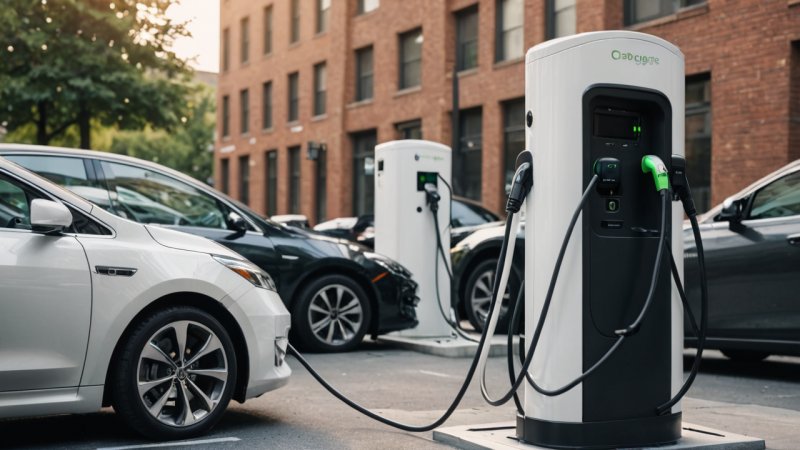The rise of electric vehicles (EVs) marks a pivotal shift in the automotive industry, one fueled by advancements in technology and a growing awareness of environmental sustainability. As more drivers transition to EVs, understanding the charging infrastructure becomes imperative. This article delves into the essentials of electric vehicle charging, including types of chargers, installation considerations, and tips for optimizing your charging experience. Whether you’re a seasoned EV owner or contemplating your first electric car, this guide will equip you with the knowledge to make informed decisions about charging your vehicle.
Understanding Electric Vehicle Charging Types
Charging infrastructure is not one-size-fits-all; it comprises various charging types tailored to different needs and scenarios. Here’s a breakdown of the primary types of EV chargers:
- Level 1 Chargers: These chargers use a standard 120-volt outlet, making them the most accessible option. However, they are also the slowest, typically providing about 4-5 miles of range per hour of charging. Ideal for overnight charging at home, Level 1 chargers are suitable for those with shorter commutes.
- Level 2 Chargers: Operating on a 240-volt outlet, Level 2 chargers significantly reduce charging time, delivering about 25 miles of range per hour. These chargers are commonly found in public charging stations and can also be installed at home, making them a popular choice for EV owners.
- DC Fast Chargers: Found predominantly along highways, DC fast chargers can replenish an EV’s battery to 80% in approximately 30 minutes. They are ideal for long-distance travel but are generally not suitable for home installation due to their high power requirements.
Home Charging Installation Considerations
Installing a home charging station can greatly enhance your EV experience, offering convenience and efficiency. Here are some key considerations to keep in mind:
- Assess Your Electrical Capacity: Before installation, it’s crucial to evaluate your home’s electrical system. Level 2 chargers typically require a dedicated circuit, and you may need to consult an electrician to ensure your home can handle the additional load.
- Choose the Right Location: Positioning your charger near your EV parking spot is vital. Consider accessibility and safety, ensuring that the charger is easily reachable and does not obstruct walkways or driveways.
- Permits and Regulations: Check local building codes and regulations regarding EV charger installation. Some areas may require permits, and it’s essential to comply with safety standards to avoid potential fines or safety hazards.
Public Charging Stations: Finding the Right Fit
As EV adoption increases, public charging stations are becoming more prevalent, but navigating them can still be a challenge. Here are some tips for finding and using public chargers effectively:
- Apps and Websites: Utilize apps like PlugShare, ChargePoint, or EVgo to locate nearby charging stations. Many of these platforms provide real-time availability, charging speeds, and user reviews, making it easier to plan your charging stops.
- Membership Programs: Some charging networks require memberships for access, while others offer pay-as-you-go options. Consider signing up for a membership if you frequently use a specific network, as it can provide savings and convenience.
- Know Your Charging Options: Public chargers can vary in speed and cost. Familiarize yourself with the different charging types available at each station to ensure you choose a charger that fits your needs and time constraints.
Maximizing Your Charging Experience
To optimize your EV charging experience, consider these practical tips:
- Charge During Off-Peak Hours: Many utility companies offer lower rates during off-peak hours. Charging your vehicle at night or during less busy times can save you money and reduce strain on the electrical grid.
- Utilize Smart Charging Features: Many modern EVs come equipped with smart charging capabilities that allow you to schedule charging times, monitor energy usage, and even receive notifications when charging is complete. Take advantage of these features to enhance your charging efficiency.
- Maintain Your Charger: Regularly inspect your charging equipment for wear and tear. Keeping your charger clean and in good condition can prolong its lifespan and ensure safe operation.
The Future of Charging Infrastructure
As electric vehicles become more mainstream, the charging infrastructure is evolving to meet the growing demand. Innovations such as wireless charging, ultra-fast chargers, and solar-powered charging stations are on the horizon, promising to make charging even more convenient and sustainable. Additionally, governments and private companies are investing in expanding charging networks to accommodate the anticipated increase in EV usage, ensuring that drivers will have access to reliable charging options wherever they go.
In conclusion, understanding electric vehicle charging infrastructure is essential for any current or prospective EV owner. By familiarizing yourself with the different types of chargers, considering home installation, effectively utilizing public charging stations, and maximizing your charging experience, you can enhance your electric vehicle journey. As technology continues to advance, staying informed about the latest developments in charging infrastructure will ensure you remain at the forefront of the EV revolution.






